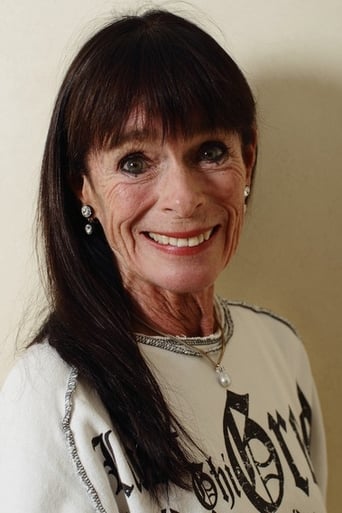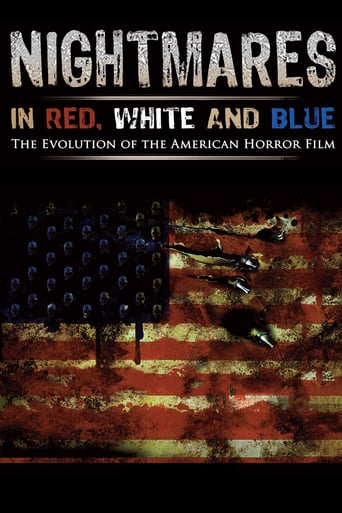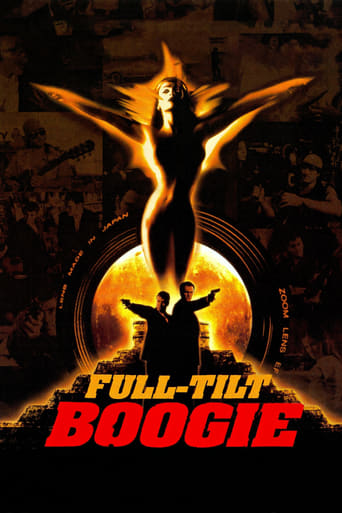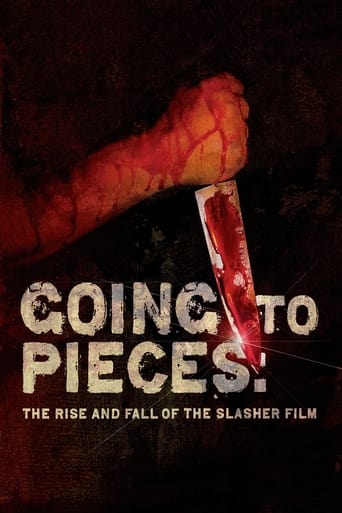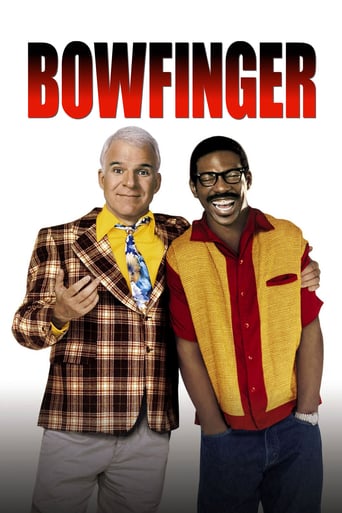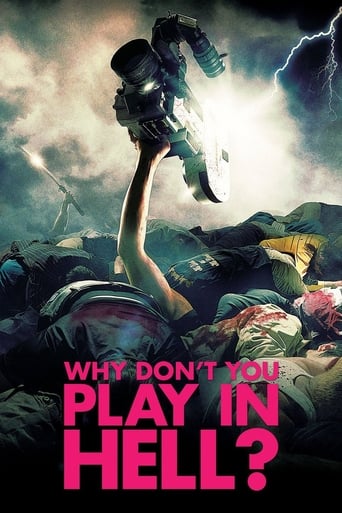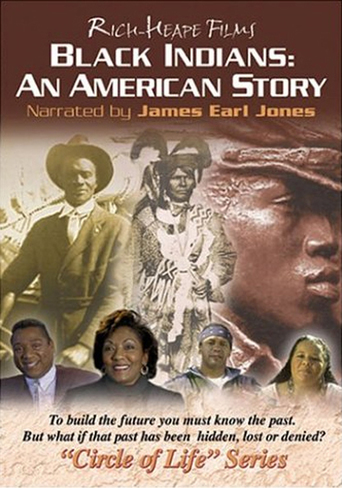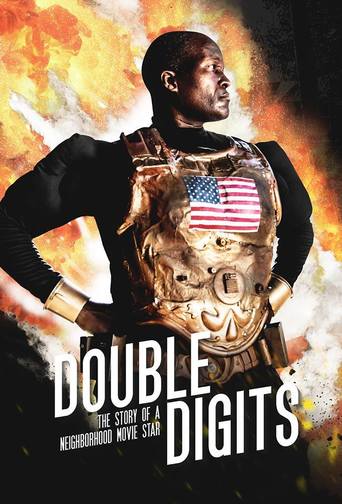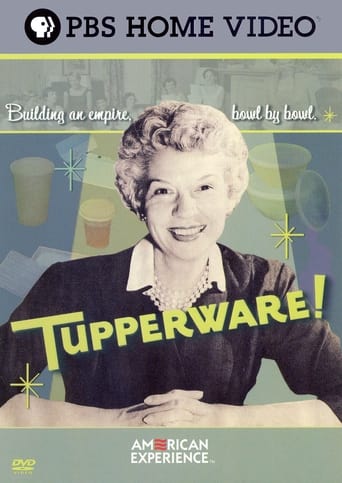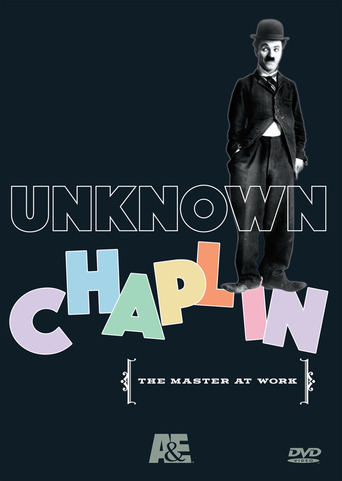
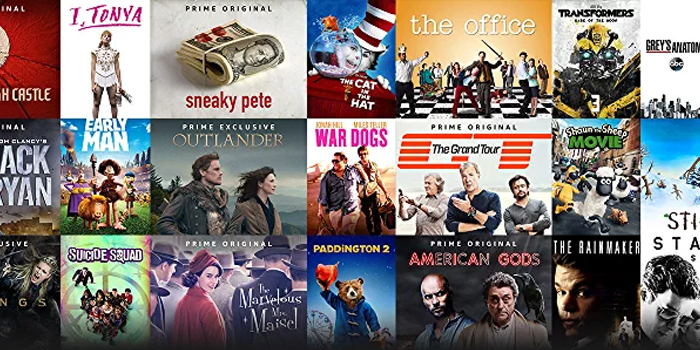
Unknown Chaplin (1983)
A documentary series examining the film making methods and techniques of Charles Chaplin. Featuring previously unseen footage from Chaplin's private film archive.
Watch Trailer
Cast
Similar titles

Reviews
The plot isn't so bad, but the pace of storytelling is too slow which makes people bored. Certain moments are so obvious and unnecessary for the main plot. I would've fast-forwarded those moments if it was an online streaming. The ending looks like implying a sequel, not sure if this movie will get one
One of the worst ways to make a cult movie is to set out to make a cult movie.
what a terribly boring film. I'm sorry but this is absolutely not deserving of best picture and will be forgotten quickly. Entertaining and engaging cinema? No. Nothing performances with flat faces and mistaking silence for subtlety.
All of these films share one commonality, that being a kind of emotional center that humanizes a cast of monsters.
Unknown Chaplin is a three part television series produced from outtakes and film clips edited from most of Charles Chaplin's well-known films. The first part focuses primarily on the Mutual period when Chaplin made twelve films in sixteen months. The film covers how Chaplin formed his own stock company to make films with much in the way John Ford would do a couple decades later. The film focuses on The Floorwalker, The Count, The Cure, and The Immigrant, while including clips of The Pawnbroker and The Adventurer. The film indicates how Chaplin rehearsed on film by viewing daily rushes and re-shooting scenes multiple times, how some gags worked by exploiting the variances in camera speed, and how Edna Purviance was not a trained actress and had to be shaped by Chaplin's direction.The second part of the film focuses on The Kid, The Gold Rush, and City Lights. It includes interviews with Jackie Coogan, Lita Grey, Georgia Hale, Robert Parrish, Virginia Cherrill, and Sydney Chaplin. A great deal of time is spent on the location shooting for The Gold Rush and the many highlights from that film. Most interesting is the initial introduction of the tramp and the flower girl scene in City Lights. Chaplin had to solve the dilemma of how to make it plain to the audience that the blind flower girl thought the tramp was a rich man. It took a year and a half of patience and countless retakes for Chaplin to solve it.The third part of the film focuses mostly on The Circus and the uncompleted film The Professor, but it also includes tidbits from City Lights, Modern Times, The Great Dictator, and Limelight. The third part showcases mostly scenes which were cut from Chaplin's final edit of his films influences some of his earlier silent pictures had on his later, more famous films. The film shows how Chaplin played an important role in the development of early cinema, combining his own artistic vision with the unbridled mayhem of his Mack Sennett days at the Keystone Company. Many of Chaplin's stock company get substantial screen time, including Edna Purviance, Eric Campbell, Albert Austin, Henry Bergman, John Rand, and Loyal Underwood. Major disappointments are the film's omissions of Chaplin's post-Limelight work, Monsieur Verdoux, and A Woman Of Paris, a box office failure upon its release now regarded as one of Chaplin's most important films and an adult film ahead of its time. James Mason narrates the film with appropriate earnestness. ***1/2 of 4 stars.
I picked up a DVD of this British series from the National Gallery of Art in Washington, DC and it's fitting that a filmmaker be featured prominently in an art gallery--especially since this film isn't a biography of Chaplin, but a step-by-step analysis of his working style. They did this by collecting outtakes that had been saved by Mutual Studios as well as through photos and even home movies. At first, I thought this all sounded very dry but as the film continued I realized what a great treasure this is. What I liked in particular was how they took two of his earlier non-Keystone comedies and analyzed the many, many changes the film underwent thanks to Chaplin's obsessive-compulsive film style. Considering what a gift he had for making films, this lengthy style of constructing films is forgivable and even understandable.In addition to analyzing his shorts, the documentary also chooses to analyze CITY LIGHTS as well as THE GOLD RUSH and provides many behind the scenes insights. I really liked this, since GOLD RUSH might just be my very favorite silent film (though it's hard to say for sure, considering some of the great films of Lloyd and Keaton).All-in-all, this is an absolute must for serious film students, historians and lovers of silent comedy. Considering all the pain and trouble they went to in making this film, it's no surprise that it earns a 10 of 10.FYI--Fortunately, while this is a nearly perfect film about Chaplin, there are also two wonderful similar documentaries about Harold Lloyd ("American Masters", Harold Lloyd: The Third Genius) and Buster Keaton (Buster Keaton: A Hard Act to Follow)--both written by the same two writers who made this wonderful film. See them all if you get a chance!!Also FYI--On the DVD is a 12 minute segment on how they assembled all the footage for the documentaries. It's worth a look to give you insight into this very laborious process.
"Unknown Chaplin" is an interesting program--from two authorities on film history and preservation, Kevin Brownlow and the late David Gill, two men I'm thankful to for many of the restored movies I've seen. I consider Charlie Chaplin one of the greatest filmmakers ever, in addition to being the funniest man I've ever seen. This three-part television series shows cut footage from Chaplin's films, providing a unique look at the filmmaker's perfectionism and improvisational approach.The first two episodes are especially telling. "My Happiest Years" features cut footage from his Mutual shorts "The Immigrant" and "The Cure", where Chaplin repeatedly retook scenes, improvising the comedy and narrative in front of the camera. And, "The Great Director" includes a nice look at the struggle between Chaplin's perfectionism and his unprofessional leading actress during filming of "City Lights". The last episode, "Hidden Treasures", shows a comedian who continued to work when not filming movies for release and how some of the gags in his films evolved over time. There's also a sequence from his aborted film "The Professor" and cut scenes from more of his films. Overall, "Unknown Chaplin" is worth watching for everyone seriously interested in Chaplin's art.
When the series Hollywood was made in the late 1970s, it's producers had more than enough material for a series of over 10 episodes (as it was shown). Especially the material dealing with interviews of silent film period survivors. The producers decided to do several follow-up documentaries. Three eventually were made, about Chaplin, Keaton, and Lloyd. This was the first. Taken from the Chaplin family film vaults, it showed (in three episodes) scenes that were filmed by Chaplin from movies that were actually finished but re-cut (like CITY LIGHTS, THE CIRCUS, and THE CURE), as well as films that were made for private viewing (a film with visitor Sir Harry Lauder), and film that was created for projects that did not work out. It was a wonderful series, and all too brief - mostly due to the tragic fact that Chaplin did not save all the cut material from all his projects and films. Try to catch this on DVD.
